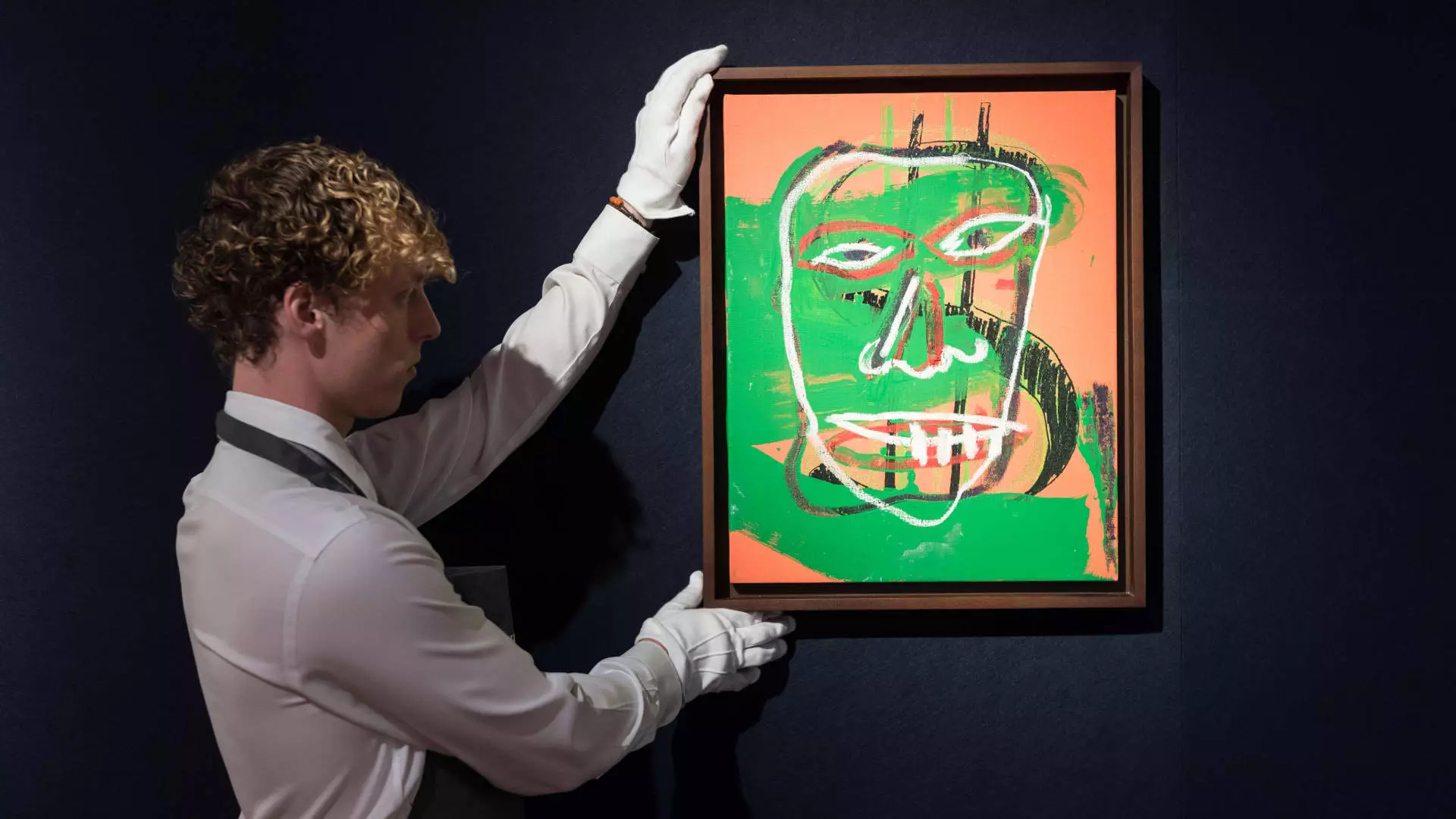As the global art market grapples with shifting consumer preferences and economic pressures, indicators suggest that the industry is on track for a second consecutive year of decline. Recent findings from the Art Basel and UBS Survey of Global Collecting reveal a stark decrease in auction sales, which plummeted 26% in the first half of 2024 compared to the previous year. This downturn raises critical questions about the future of art investment and the evolving tastes of high-net-worth individuals.
Traditionally, the art market has been buoyed by a small number of wealthy collectors willing to invest in high-value pieces. However, the latest survey findings indicate a significant shift in behavior. Notably, the percentage of collectors intending to purchase art has dropped to 43%, a marked decline from over 50% in the previous year. In stark contrast, 55% of collectors plan to sell art within the next year, indicating a growing supply that may further depress prices. Paul Donovan, chief economist at UBS Global Wealth Management, points out that the elite buyers are adopting a more measured approach, which suggests a cooling off rather than a thriving market.
As the art world anticipates high-profile auctions in New York this November and Art Basel Miami Beach in December, the overarching sentiment remains cautious. While some collectors express optimism—91% of wealthy respondents see potential for market recovery in the next six months—the broader context reveals an underlying tension. Geopolitical challenges, particularly those surrounding the Middle East and Ukraine, alongside economic stagnation in major regions like Europe and China, have eroded buyer confidence. The added burden of higher interest rates means that wealthy collectors must rethink their investment strategies; they can earn substantial returns from more liquid investments such as cash and government securities instead.
This juxtaposition between an optimistic forecast and declining buyer interest highlights the complexities of the current market landscape. Interestingly, although wealthy collectors continue to spend an average of $50,000 annually on art, this figure masks a significant shift in purchasing behavior. With older collectors scaling back their investments, a generational divide has emerged, leading younger collectors—particularly from Generation X and millennials—to prioritize more affordable and modern art over high-value masterpieces.
One of the most critical evolutions in the art market involves the emotional and financial profiles of its participants. Generation X collectors have emerged as a formidable force, with spending habits characterized by an average expenditure of approximately $578,000 in 2023. Notably, these younger buyers have changed the game, favoring works from up-and-coming artists or more accessible contemporary pieces rather than iconic works that command multi-million dollar price tags. This growing demographic reflects a significant cultural shift whereby art is increasingly viewed not just as an investment but as a personal passion and a pathway to support emerging talent.
This generational shift creates a dynamic challenge for galleries and dealers. The oversupply of high-value Impressionist and Abstract works stands in contrast to the rising demand for more affordable pieces. As established collectors downsize their collections, high-value artworks are flooding the market—yet the appetite for such pieces is shrinking. Thus, traditional dealers must adapt to these fluctuations in demand, changing their inventory and marketing strategies to align with the preferences of the younger collectors.
In reflecting on the future landscape of the art market, it is essential to consider the broader context of wealth transfer as older collectors pass down their holdings to the next generation. A significant majority—91%—of wealthy collectors possess inherited artwork, yet many express intent to retain at least a portion of these pieces. This retention highlights not only nostalgia but also the emotional value assigned to art, suggesting that personal taste will play a significant role in future market dynamics.
Moreover, ongoing concerns about the ethical implications of art ownership and sales are reshaping investor behavior. Issues such as international art movement barriers, legal disputes regarding restitution, and the fair treatment of artists are increasingly at the forefront of collectors’ minds. Those who engage with the art market today are not just doing so as investors; they are also navigating a complex ethical landscape that influences their purchasing decisions.
As the art market expects to confront another challenging year, the interplay between economic factors, generational shifts, and ethical considerations will prove pivotal in determining its future trajectory. The ongoing evolution of tastes among collectors, combined with broader economic trends, indicates that while the market may be in decline, it is also ripe for transformation—one that may ultimately lead to a more sustainable and ethically sound future for art collecting and investment.

